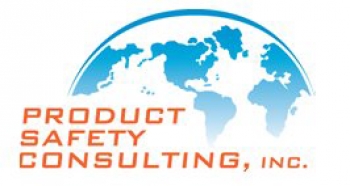Fiberglass sleeving is often used in many different types of electrical products. It is used to insulate from heat. It is used to hold wires together. It is used to cover splices. It comes in different materials for different applications.
It is important to know there are difference types of sleeving and although it says UR, it may be the wrong UR category. There are two main categories UL Recognizes Sleeving under – Flame Retardant and Coated Electrical. The last thing you want to do is pick the wrong one, order 100,000 feet of it, go into production only to find out 2 weeks before shipping it is UR in the wrong category.
UZIQ2.GuideInfo - Sleeving, Flame Retardant – Component
CONDITIONS OF ACCEPTABILITY
Consideration is to be given to the following Conditions of Acceptability when these components are employed in the end-use equipment:
1. This sleeving has not been investigated for any electrical or mechanical capabilities.
2. This sleeving has not been investigated to determine its thermal performance.
3. This sleeving has not been investigated for use in contact with sharp edges, corners, projections or burrs, or where subject to tension, compression, abrasion, repeated flexing or where exposed to ultraviolet radiation or oil contamination.
UZFT2.GuideInfo - Sleeving, Coated Electrical - Component
CONDITIONS OF ACCEPTABILITY
Consideration is to be given to the following Conditions of Acceptability when these components are employed in the end-use equipment:
1. Sleeving shall not be used over the maximum voltage rating.
2. Sleeving shall not be used over the maximum temperature rating.
3. The minimum wall thickness of the sleeving shall comply with the requirements of the end product.
4. Sleeving marked "Oil Resistant 60°C " or "Oil Resistant 80°C" has been investigated for intermittent or occasional contact with oil not exceeding the oil rating.
5. Sleeving marked "VW-1" has been investigated using a fine wire support in conducting the flammability test.
6. Sleeving is not acceptable for use in contact with sharp edges, corners, projections or burrs , or where subjected to tension, compression, abrasion or repeated flexing without additional testing.
7. Sleeving is not recommended for use where it is feasible to employ a standard insulated conductor (appliance wiring material) intended for the purpose.
8. Sleeving shall be used in dry and damp locations only as defined in ANSI/NFPA 70, "National Electrical Code."
This process has led production people to do small runs of 50 or 100 units, then they call us so they can avoid the whole system of full certification and follow-up service. We come to the site, inspect the units, label them, and then we go away. If you have another small run we can come back and do it again. We’ve already done the testing , so this time all we have to do is verify that the units you want labeled are the same. Once we do we put a sticker on them. That makes this follow-up less costly. Once we’ve labeled the units, we’re gone. In cases like these we are red-tag erasers. If you get red-tagged we can free the piece of machinery so you can get back into production.
We work with all of the NRTLs—UL, Intertech, CSA, TUV, QPS and MET. Our job is to help you achieve certification for all of your products. We can tell you exactly what you need to make those products pass. We begin by converting your documentation into the correct forms and formats. Our other services include: design review from concept, complete paragraph-by-paragraph evaluation, preliminary testing, and submittal management. Our relationships with all of the NRTLs are phenomenally good, and we have learned the secrets of how to get compliance done.


